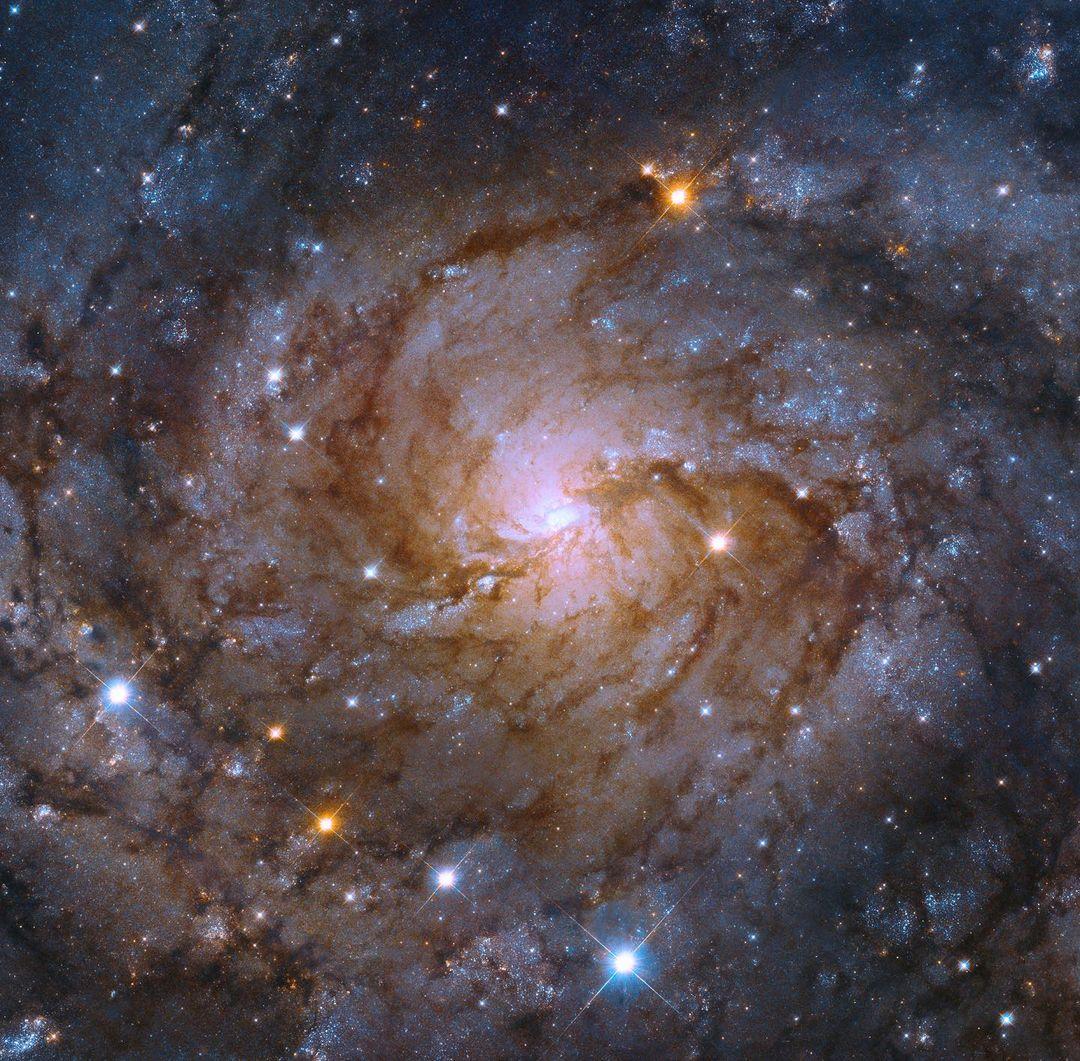

Not even cosmic dust could dull this shine ✨ Nestled in the equator of the Milky Way’s pearly disk, crowded with thick cosmic gas, dark dust, and glowing stars that obscure our view, lies the Hidden Galaxy captured by @NASAHubble . At a relatively bright 8.4 magnitude, this would be one of the brightest galaxies in our night sky – if it were not obscured by so much interstellar dust. This spiral galaxy located approximately 11 million light years from Earth displays intertwined tendrils of dust in spectacular arms that fan around a brilliant core of hot gas and stars. The core of this galaxy is a specific type of region where atomic hydrogen has been ionized. Regions such as this are known to be energetic birthplace of stars, where thousands of stars can form over a couple million years. Extremely hot, young blue stars emit ultraviolet light which further ionize surrounding hydrogen. Credit: NASA,@EuropeanSpaceAgency , P. Sell (University of Florida), and P. Kaaret (University of Iowa); Image processing: G. Kober (NASA Goddard/Catholic University of America) #NASA #Space #Astronomy #Hubble #Galaxies #AstroPhotography
May 16, 2022
Disclaimer
The data provides is not authorized by TikTok. We are not an official partner of TikTok.
Use of materials from the resource is permitted only with a link to our resource.
Contact